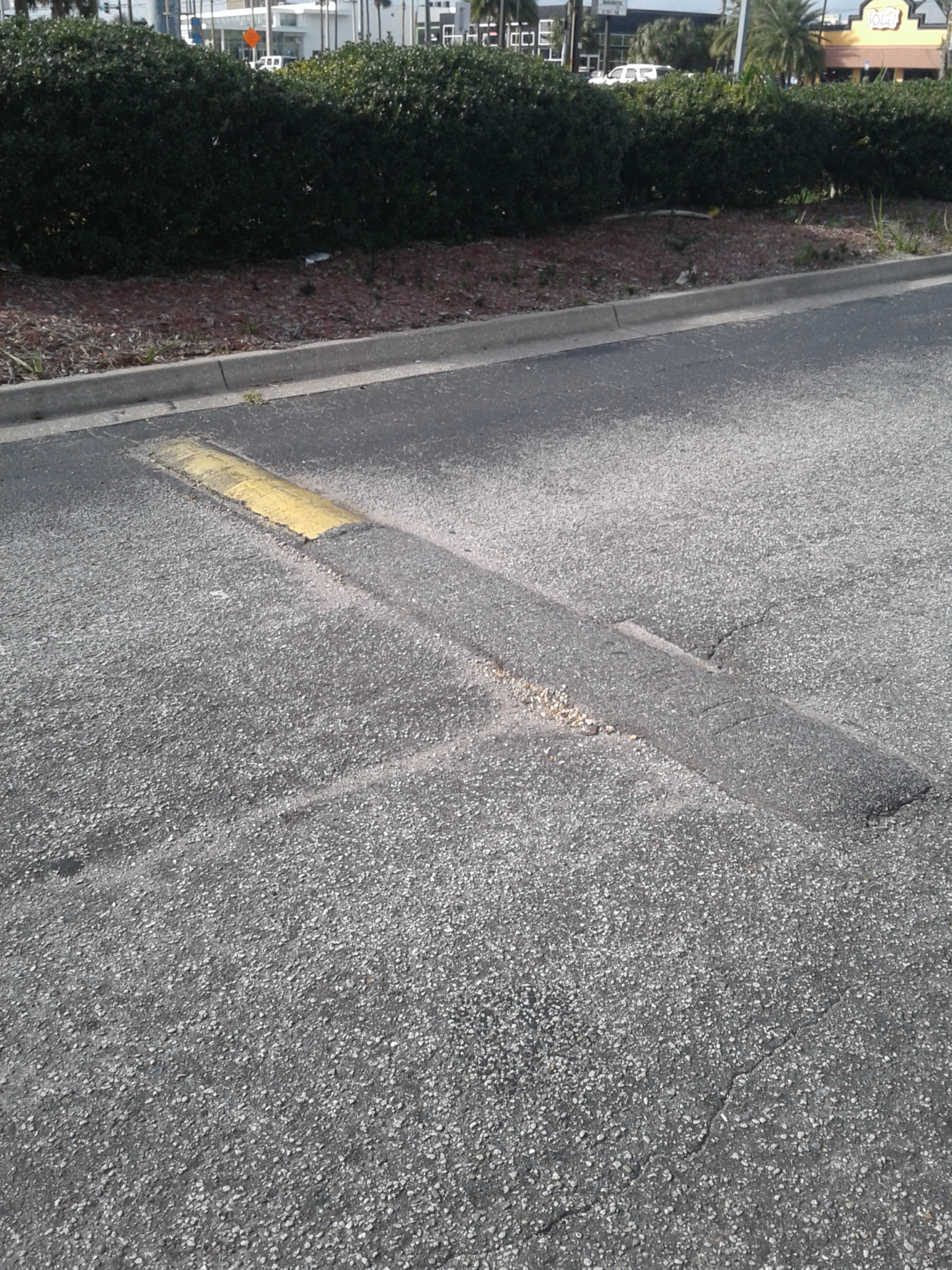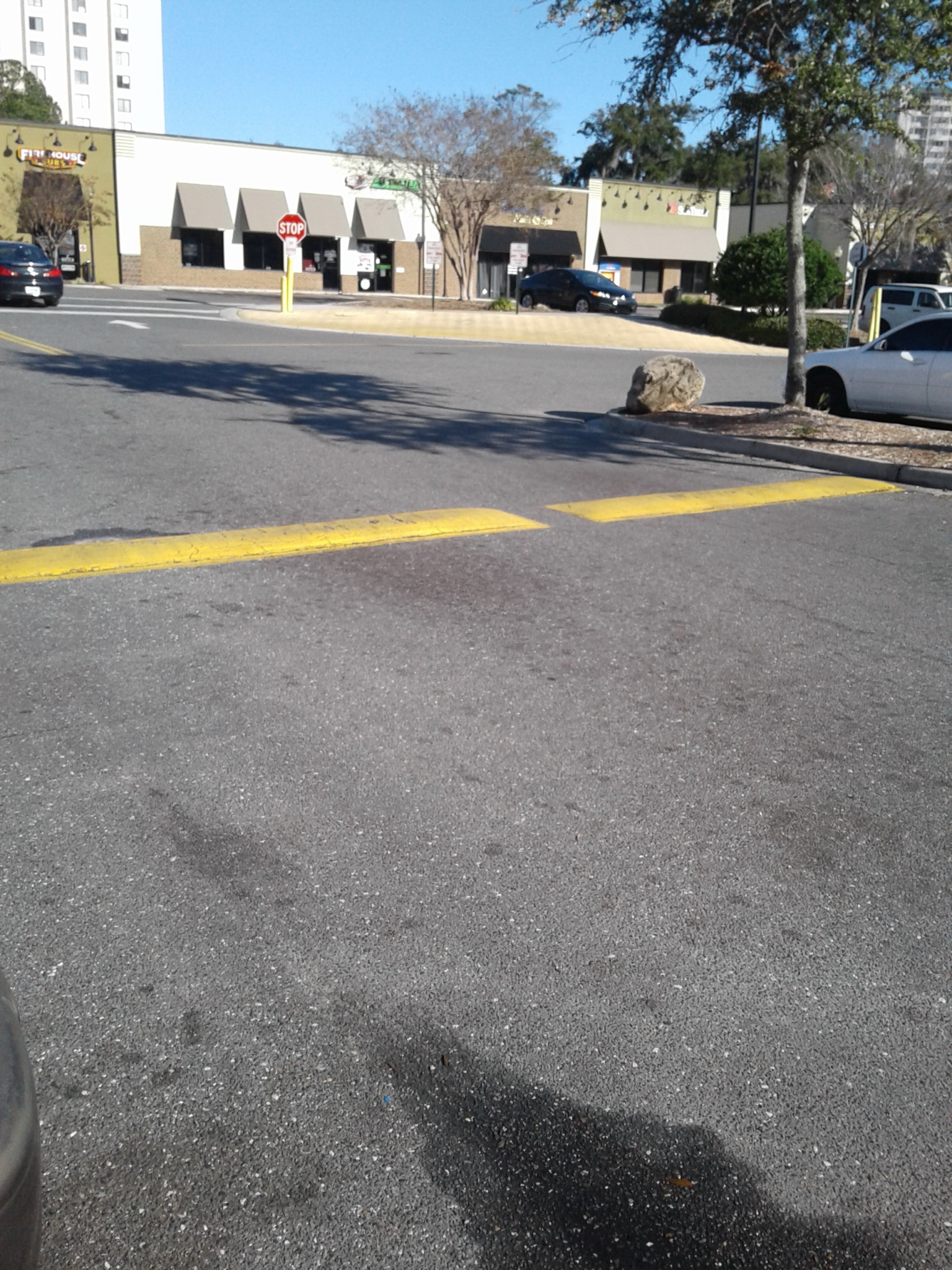Speed Bump Trip and Fall Hazards
Speed bumps have been used as a speed limiting measure on roadways and parking lots. Unfortunately, the inappropriate design, location and maintenance of speed bumps presents a trip hazard to pedestrians. This article provides a brief summary of the issues involved based on our experience.
When walking, the normal human gait involves moving one foot in front of the other while transferring one’s weight from the back foot to the front foot. During this process, the foot is lifted only ¼ inch from the walking surface. This “clearance distance” occurs without the need for active cognition and is satisfactory on level surfaces. Pedestrians expect a level walking surface to remain level absent information to the contrary. When a pedestrian unexpectedly encounters an impediment in the walking surface, it is reasonable to expect that a trip will occur. As the pedestrian’s leading or swinging foot strikes the impediment, the foots forward motion is momentarily stopped and weight transfer is disrupted such that the pedestrian will stumble. The individual may recover from the stumble or continue to fall to the walking surface. Speed bumps that are unmarked or deceptively marked are particularly hazardous when installed in a foreseeable area of pedestrian traffic.

Speed bumb not marked.
Speed bumps should not be used in areas where pedestrian traffic is expected. They should be clearly marked with contrasting colors, be well lit and be slip-resistant. As an added safety precaution, signs should be posted, warning of the presence of speed bumps. At a minimum, ASTM standards should be followed.

Speed bumb marked with paint.
General Health & Safety Services, Corp. has extensive experience in evaluating walking surfaces in a wide variety of environments. Contact us for more information at www.4safetyandhealth.com.
